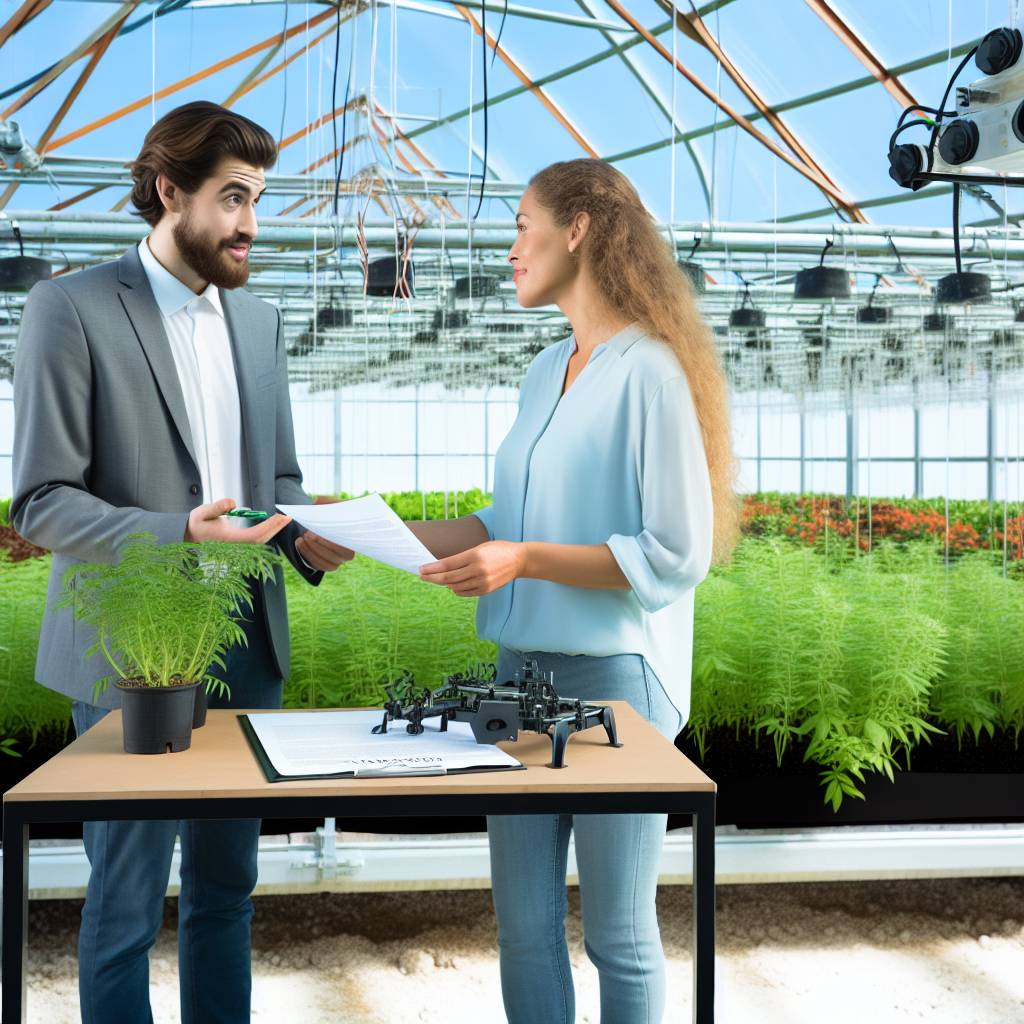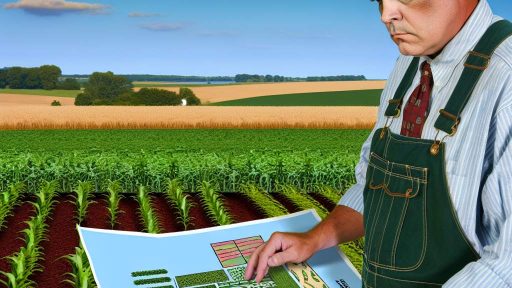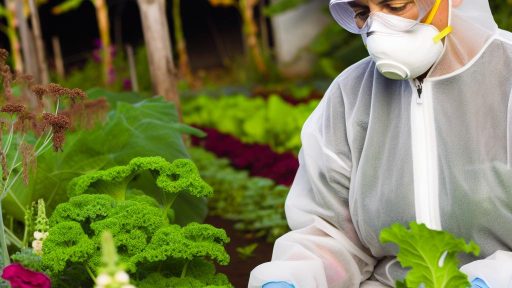Introduction to Greenhouse Leasing for Agricultural Property Owners
Greenhouse leasing offers a unique opportunity for agricultural property owners.
By leasing greenhouse space, owners can generate additional income.
This model attracts various businesses, including nurseries and farms.
Moreover, it fosters community engagement through local food production.
Benefits of Greenhouse Leasing
Leasing greenhouses has numerous benefits for property owners.
First, it provides a steady revenue stream without requiring large investments.
Second, it allows owners to maintain ownership while enhancing property use.
Furthermore, leasing can minimize maintenance responsibilities for the landowner.
Attracting Tenants
Attracting potential tenants is crucial for successful greenhouse leasing.
Property owners should highlight key features of their greenhouses.
Some features may include temperature control and irrigation systems.
Additionally, effective marketing strategies can enhance visibility.
Networking with local farming groups can also help connect with interested tenants.
Setting Up Leasing Agreements
Creating a clear leasing agreement is essential for both parties.
The agreement should outline rental terms, responsibilities, and duration.
Transform Your Agribusiness
Unlock your farm's potential with expert advice tailored to your needs. Get actionable steps that drive real results.
Get StartedMoreover, property owners should specify maintenance duties and costs.
Including an option for renewal can benefit both tenant and owner.
Considerations for Property Owners
Property owners must consider several factors before leasing greenhouses.
Understanding local market trends can aid in pricing strategies.
Moreover, assessing the environmental impact of greenhouse operations is vital.
It’s important to stay informed about regulations affecting greenhouse leasing.
Opportunities of Greenhouse Leasing
In summary, greenhouse leasing can be a profitable venture for agricultural property owners.
By understanding the benefits and responsibilities, owners can make informed decisions.
Ultimately, this approach supports local agriculture while maximizing property use.
Understanding the Benefits of Leasing Greenhouses
Maximizing Usage of Agricultural Land
Leasing greenhouses allows agricultural property owners to utilize their land efficiently.
This approach maximizes productivity, enabling better crop yields.
Additionally, it minimizes idle land, ensuring more sustainable agricultural practices.
Access to Advanced Technology
Leasing greenhouses often provides access to cutting-edge agricultural technology.
Many greenhouse companies invest in state-of-the-art systems for climate control.
This technology enhances growing conditions, resulting in healthier plants.
Financial Flexibility
Leasing can provide financial relief to property owners.
It reduces the upfront costs associated with building and maintaining greenhouses.
Moreover, it allows owners to allocate funds to other business areas.
Risk Mitigation
By leasing, property owners can mitigate various agricultural risks.
They avoid long-term commitments to infrastructure, which can be costly.
Additionally, leasing transfers some operational risks to the leasing company.
Enhanced Crop Variety
Leased greenhouses enable owners to experiment with different crops.
This flexibility can lead to increased revenue through diverse crop production.
Moreover, it allows farmers to adapt to market trends quickly.
Showcase Your Farming Business
Publish your professional farming services profile on our blog for a one-time fee of $200 and reach a dedicated audience of farmers and agribusiness owners.
Publish Your ProfileSimplified Maintenance and Repairs
Leasing typically includes maintenance and repair services.
This arrangement alleviates property owners from the burden of upkeep.
As a result, they can focus more on cultivation and less on infrastructure issues.
Different Types of Greenhouse Leases
Traditional Leasing
Traditional greenhouse leasing offers a straightforward arrangement.
This type requires the lessee to pay a regular rent.
The lease agreement usually outlines the lease duration.
Additionally, it includes terms regarding maintenance responsibilities.
This option suits property owners seeking stable income.
Percentage Lease Agreements
Percentage leases tie rent to production levels.
Landowners receive a percentage of the lessee’s gross sales.
This option benefits property owners during profitable seasons.
It can also motivate lessees to maximize output.
However, it may lead to lower fixed monthly income.
Turnkey Lease Agreements
Turnkey leases provide a complete solution for lessees.
These agreements include both the greenhouse and equipment.
They may also cover all operational aspects of running the facility.
This arrangement reduces the initial investment burden on lessees.
Consequently, it attracts those new to greenhouse operations.
Sub-Lease Opportunities
Sub-leases allow lessees to rent out part of the greenhouse space.
This flexibility can enhance the profitability of the primary lessee.
Property owners must approve any sub-lease agreements.
The terms of the original lease will typically dictate these arrangements.
Fixed-Term versus Open-Ended Leases
Fixed-term leases specify the rental duration upfront.
They provide certainty for both parties involved.
On the other hand, open-ended leases continue until terminated by either party.
These arrangements offer greater flexibility for changes in market conditions.
Each option has distinct advantages based on individual needs.
Delve into the Subject: Integrating Precision Agriculture With Real Estate Strategies For Crop Success
Factors to Consider Before Entering a Greenhouse Lease
Understanding Lease Terms
Reviewing lease terms is crucial before signing any agreement.
Ensure you understand the duration of the lease clearly.
Examine what happens upon lease expiration or termination.
Clarify responsibilities for maintenance and repairs.
Including specific maintenance tasks can prevent disputes later.
Assessing Financial Implications
Calculating the costs is an essential step in leasing.
Assess your budget and financial resources before commitment.
Consider additional costs, such as utilities and management fees.
Evaluate potential profits from the greenhouse operations.
This evaluation should help you make informed decisions.
Evaluating Site Suitability
The location of the greenhouse greatly affects its success.
Analyze environmental factors that may impact growth.
Showcase Your Farming Business
Publish your professional farming services profile on our blog for a one-time fee of $200 and reach a dedicated audience of farmers and agribusiness owners.
Publish Your ProfileClimate, soil quality, and sunlight availability are key considerations.
Examine access to water sources and transport routes as well.
These factors are vital for effective agricultural practices.
Identifying Legal Considerations
Understanding local zoning and agricultural laws is vital.
Verify that your intended use complies with regulations.
Review insurance requirements related to greenhouse operations.
Legal guidance can help clarify any complex agreements.
Being informed can save time and prevent costly mistakes.
Creating a Business Plan
Developing a comprehensive business plan is essential.
This plan should outline your operational goals and strategies.
Include potential crops and markets to target.
Consider staffing needs and management structures as well.
A solid plan serves as a roadmap for your greenhouse success.
Delve into the Subject: Greenhouse Expansion for Rural Land Investments
Legal Considerations and Lease Agreements
Understanding Lease Agreements
A lease agreement defines the terms between the property owner and the tenant.
It outlines each party’s rights and responsibilities.
Additionally, it specifies the duration of the lease.
Both parties should review lease terms carefully.
This helps prevent misunderstandings later on.
Essential Elements of a Lease
Several key elements should appear in every lease agreement.
- The names and addresses of the landlord and tenant.
- The description of the leased greenhouse property.
- The rental amount and payment terms.
- The duration of the lease, including start and end dates.
- Any provisions regarding maintenance responsibilities.
Inclusion of these elements strengthens the agreement.
Legal Compliance
Both landlords and tenants must comply with local laws.
This includes zoning regulations regarding greenhouse operations.
Understanding agricultural tenancy laws is also crucial.
Landlords should ensure the lease adheres to environmental regulations.
Similarly, tenants must comply with safety and health codes.
Negotiating Terms
Negotiations can help align both parties’ interests.
Landlords might want to remain flexible on lease terms.
For instance, they could consider offering longer lease durations.
Tenants should communicate their needs clearly during negotiations.
This fosters a collaborative relationship moving forward.
Renewal and Termination Clauses
Clear renewal and termination clauses benefit both parties.
They define how and when the lease can be renewed or terminated.
Landlords should specify any conditions for renewing the lease.
On the other hand, tenants need to understand their exit options.
These clauses help prevent disputes at the end of the lease term.
Learn More: Precision Agriculture for Improving Soil Health in Farms
Maintenance Responsibilities in Greenhouse Leasing
Understanding Maintenance Roles
In a greenhouse leasing agreement, both parties have maintenance responsibilities.
The property owner generally ensures the structural integrity of the greenhouse.
On the other hand, the lessee is responsible for day-to-day upkeep.
Showcase Your Farming Business
Publish your professional farming services profile on our blog for a one-time fee of $200 and reach a dedicated audience of farmers and agribusiness owners.
Publish Your ProfileClearly defining these roles promotes efficient operations.
Property Owner Responsibilities
Property owners must maintain the greenhouse structure.
This includes repairing roofs, walls, and doors as needed.
They should also ensure the heating and cooling systems function properly.
Furthermore, maintaining electrical systems is essential for safety.
Lessee Responsibilities
The lessee is responsible for plants and daily operations.
This includes watering, pruning, and feeding the plants.
They must also monitor for pests and diseases regularly.
Proper environmental control within the greenhouse is crucial.
Shared Responsibilities
Some responsibilities may fall under both parties.
For example, both should monitor humidity and temperature levels.
Certain maintenance tasks, like frequent cleaning, are best handled collaboratively.
Establishing a clear communication channel fosters cooperation.
Importance of a Written Agreement
A written leasing agreement plays a vital role in defining responsibilities.
This document should outline all maintenance tasks and expectations.
In addition, it should address procedures for reporting issues.
Moreover, detailing repair timelines helps prevent future conflicts.
Benefits of Defined Responsibilities
Clear maintenance definitions benefit both property owners and lessees.
Such clarity fosters a harmonious working relationship.
Additionally, it can lead to more productive greenhouse operations.
Uncover the Details: Fertilizer Management for Enhancing Soil Microbiology in the USA

Financial Implications and Cost Analysis of Leasing vs. Owning
Understanding the Basic Costs
Both leasing and owning greenhouse property involve various costs.
Leasing often entails monthly payments over an agreed period.
In contrast, ownership typically requires a substantial upfront investment.
Maintenance costs also appear differently in both scenarios.
Leased properties may include maintenance in the lease agreement.
Meanwhile, owners bear all maintenance responsibilities independently.
Evaluating Long-term Investments
Leasing can provide short-term flexibility and lower initial expenses.
This aspect attracts new agricultural entrepreneurs with limited budgets.
Owning, on the other hand, represents a long-term investment opportunity.
It allows property appreciation and can build equity over time.
However, potential buyers should assess market trends carefully.
Financial Risk Considerations
Leasing presents minimal risk concerning property value fluctuations.
Consequently, this option suits individuals uncertain about the market.
In contrast, ownership entails risks connected with property value changes.
Owners may face financial losses if the market declines unexpectedly.
Hence, they must weigh potential risks against expected benefits.
Impact of Tax Implications
Leasing often provides immediate tax deductions on payments.
These deductions can enhance cash flow for businesses.
Similarly, ownership allows for depreciation deductions over time.
Showcase Your Farming Business
Publish your professional farming services profile on our blog for a one-time fee of $200 and reach a dedicated audience of farmers and agribusiness owners.
Publish Your ProfileOwners can also benefit from potential capital gains tax exclusions.
Understanding these tax implications is vital for making informed decisions.
Comparing Leasing and Owning Outcomes
Choosing between leasing and owning a greenhouse involves various financial factors.
Each option offers distinct benefits and drawbacks concerning costs and risks.
Property owners and potential leaseholders should evaluate their unique situations.
Ultimately, informed decisions will lead to sustainable agricultural success.
Case Studies: Successful Greenhouse Leasing Examples
The Miller Family Farm
The Miller family operates a small vegetable farm in Michigan.
They leased their greenhouse space to local organic growers.
This collaboration enabled them to diversify their income streams.
The organic growers benefited from the existing infrastructure.
Additionally, the Millers experienced increased foot traffic on their farm.
This partnership attracted customers interested in fresh organic produce.
Sunny Acres Greenhouses
Sunny Acres, located in California, specializes in ornamental plants.
They leased greenhouse space to several small entrepreneurs.
These entrepreneurs grew unique varieties of flowers and herbs.
This approach created a vibrant community of plant enthusiasts.
Subsequently, Sunny Acres gained brand visibility and new customers.
Moreover, the greenhouse leasing model increased their overall profitability.
Green Growers Cooperative
The Green Growers Cooperative initiated a leasing program in Oregon.
They focused on sustainable and hydroponic growing methods.
This initiative attracted new members eager to experiment with technology.
Leased greenhouses provided necessary resources without upfront costs.
This arrangement allowed members to innovate without financial strain.
Consequently, the cooperative experienced exponential growth in membership.
Harvest Haven Farms
Harvest Haven Farms is known for its CSA (Community Supported Agriculture) program.
They converted part of their land into shared greenhouse spaces.
This attracted local gardeners wanting to grow vegetables year-round.
By leasing these spaces, Harvest Haven increased community engagement.
Members gained firsthand experience growing their own food.
Simultaneously, the farm benefited from the community’s support.
Future Trends in Greenhouse Leasing and Agriculture
Technological Advancements
New technologies are transforming greenhouse farming.
Smart sensors monitor conditions like temperature and humidity.
Automation systems enhance efficiency and reduce labor costs.
Furthermore, data analytics helps farmers optimize crop yields.
Innovation continues to push the boundaries of traditional practices.
Increased Demand for Sustainable Practices
Consumers are increasingly favoring sustainably grown products.
Greenhouses offer controlled environments that support this trend.
As a result, many farmers are shifting towards eco-friendly methods.
This shift includes utilizing renewable energy sources.
Consequently, leasing greenhouses becomes a smart investment.
Showcase Your Farming Business
Publish your professional farming services profile on our blog for a one-time fee of $200 and reach a dedicated audience of farmers and agribusiness owners.
Publish Your ProfileGrowing Urban Agriculture
Urban farming is gaining traction in metropolitan areas.
Greenhouses fit perfectly into urban settings.
These structures can utilize unused spaces effectively.
This adaptation meets local food demands efficiently.
Additionally, urban greenhouses reduce transportation costs.
Diverse Crop Options
Farmers are beginning to explore new and diverse crops.
These include exotic fruits and specialty herbs.
This diversity caters to gourmet and health-conscious markets.
Consequently, leasing greenhouses allows for flexibility in crop selection.
Moreover, it supports farmers in meeting niche market demands.
Collaboration and Community Initiatives
Collaborative farming models are on the rise.
Local communities are coming together to share resources.
This collaboration fosters knowledge exchange among farmers.
Greenhouse leasing plays a vital role in these initiatives.
Ultimately, this trend strengthens local food networks.
Additional Resources
Rural Energy for America Program Renewable Energy Systems …
Census of Agriculture – USDA – National Agricultural Statistics Service




